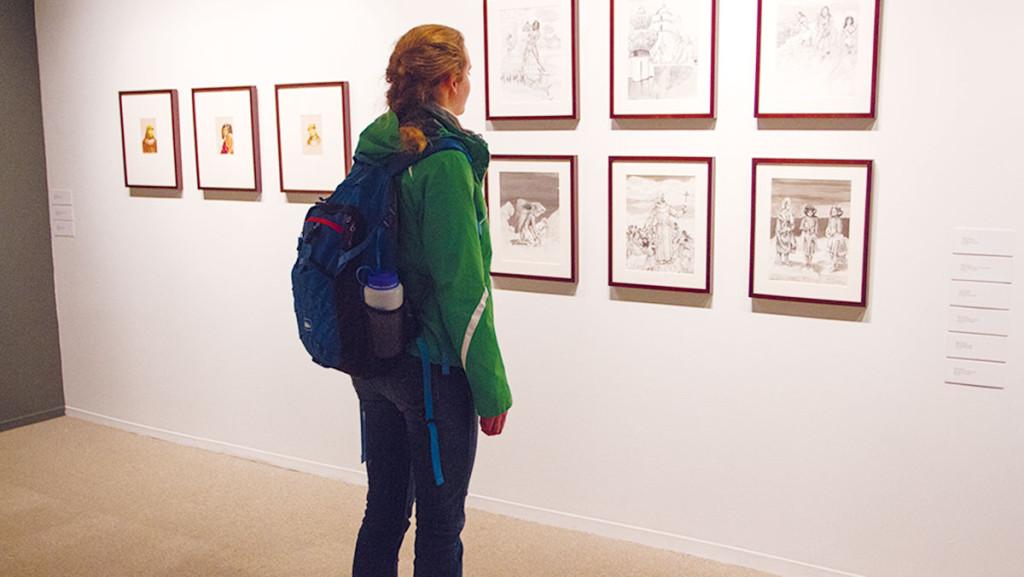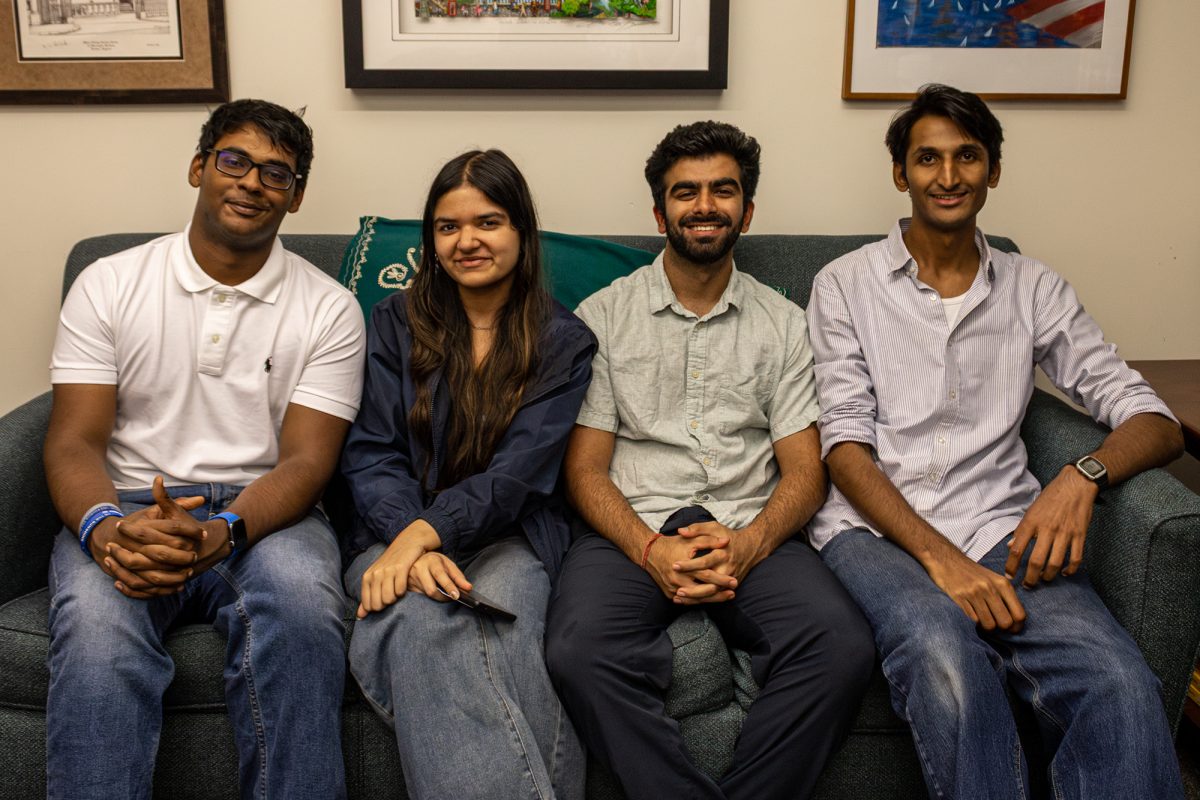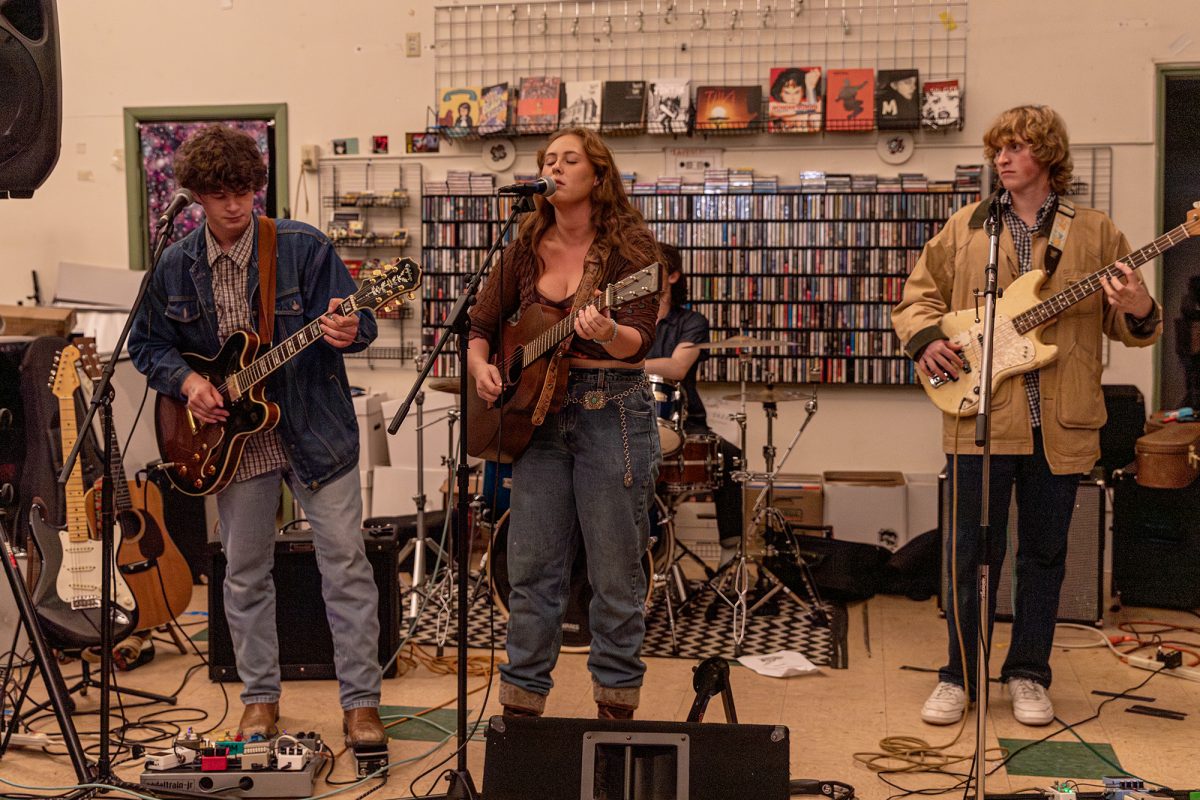Despite contrasting artistic media, two seemingly separate exhibits share the same ideas of origins and identity.
The Handwerker Gallery opened two new exhibits Jan. 21, “Origin Stories: Alien Apostles” by Katie Dorame and “Origin Stories: Altar Apparitions” by her sister Mercedes Dorame. In “Alien Apostles,” Katie combines traditional media of art like sketches and drawings with science-fiction characteristics to present a critical view of American colonialism. In “Altar Apparitions,” Mercedes’ photographic manipulation of the natural Los Angeles landscape questions the true ownership of land and identity.
Mara Baldwin, director of the Handwerker Gallery, first chose Katie’s “Alien Apostles” to showcase and then decided it would be interesting to pair her with another artist, ultimately choosing Mercedes.
“The two of them have very different strategies on how to think about similar issues,” Baldwin said.
The Dorame sisters, both members of the federally unrecognized Gabrielino/Tongva Native American tribe of California, fuse their personal history with Native American culture into their works.
Katie’s “Alien Apostles” draws upon the cowboys and indians concept popularized in Western culture, infusing it with colonial-era themes reminiscent of the Spanish occupation of the western United States. Her works include hand drawings, oil paintings and sketches, with the natural media juxtaposing the strangeness and supernatural qualities of the alien characters. They create a story following the oppression of the Native Americans upon European arrival on North American soil. While Katie draws the Native American characters as normal humans, she gives the colonist characters an alien makeover, completely stripping them of any human-like qualities. She gives these characters green skin, glowing yellow eyes and no mouths or noses, portraying the common Hollywood-alien trope.
This dehumanization of the colonists juxtaposed to the humanity of the Native Americans elicits shock and horror toward the “alien” colonists. As a result, the audience feels more sympathetic toward the Native Americans. In some of Katie’s works that depict an alien Spanish priest converting the Native Americans to Catholicism, the converts are given alien-like features, suggesting a critique toward the tearing of the natives from their religious heritage.
Mercedes’ “Altar Apparitions” offers more subtle critiques through photographs of a landscape that has been minimally altered by her own hand. The photographs offer a perspective on the idea of land ownership, and the subtle manipulations add a miniscule, yet impactful, human mark on the otherwise natural landscape, such as the placement of cinnamon in the photograph “In the Beginning was Fox and Cinnamon.” This fabrication of the landscape ties into Mercedes’ personal Native American roots and attempts to reimagine the presence of a tribe whose history has been erased and neglected.
In contrast to “Alien Apostles,” which focuses on the interactions between Native Americans and Europeans, Mercedes’ works primarily emphasizes the interaction between man and nature. The stillness of the photographs, as well as the lack of human presence, creates a somber mood mourning the abuse of the natural land.
“Her work is nostalgic, but it’s also emotional and tender,” Baldwin said. “Mercedes is coming from the perspective of a culture that has been disempowered and dis-attached from the land that they once lived on. By using the camera and finding spaces and intervening on landscapes, that is a negotiation of who belongs where, what does it mean to own land and how does this land belong to me and how do I belong to this place.”
Both exhibits tell the story of American colonialism from the perspective of the disenfranchised that history so often neglects. Baldwin said the exhibits follow a linear arc, beginning with the colonization of the Native Americans in “Alien Apostles” and ending with the changed state of the land in “Altar Apparitions.”
While different at first glance, the Dorame exhibits essentially offer identical historical perspectives from the eyes of the silent and oppressed, ones that tell the origins of a people whose stories often go unheard.














